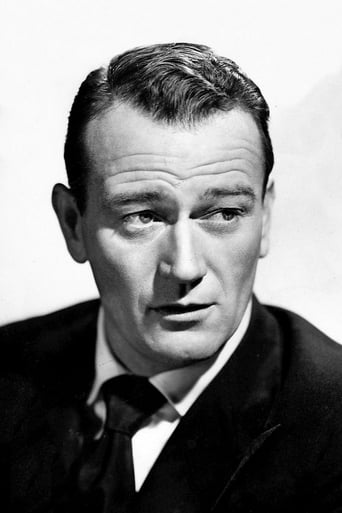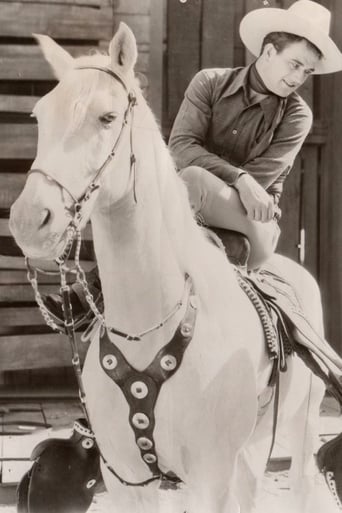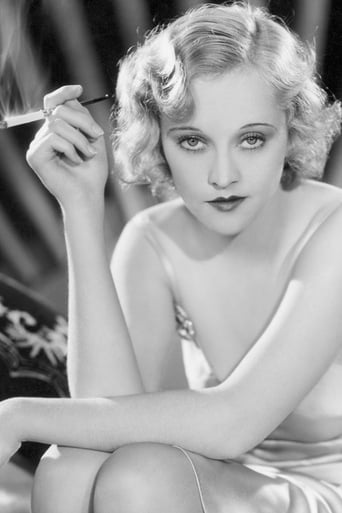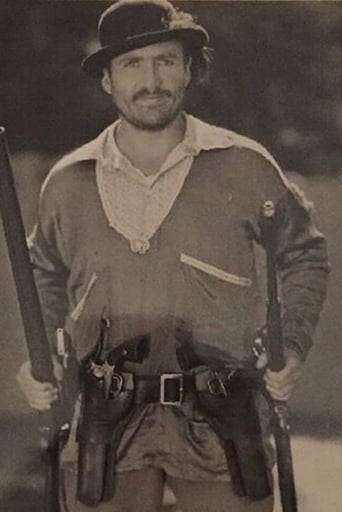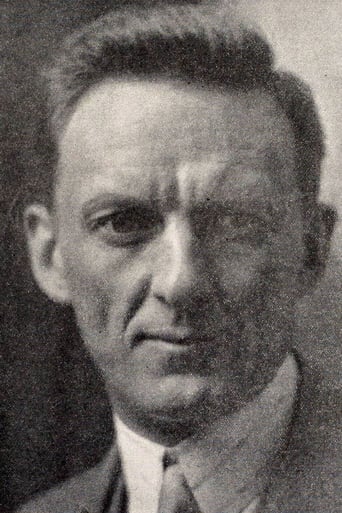Ensofter
Overrated and overhyped
Moustroll
Good movie but grossly overrated
StyleSk8r
At first rather annoying in its heavy emphasis on reenactments, this movie ultimately proves fascinating, simply because the complicated, highly dramatic tale it tells still almost defies belief.
Sarita Rafferty
There are moments that feel comical, some horrific, and some downright inspiring but the tonal shifts hardly matter as the end results come to a film that's perfect for this time.
grantss
The only reason to watch this is that it features John Wayne early on in in his acting career. Hardly his first movie, it was only six years into his career and three years since he got his first movie credit. Wayne is hardly recognisable: much thinner than most of us remember him, and didn't have the trademark confidence and swagger yet. The voice is unmistakable, however.Fittingly for a John Wayne movie, Haunted Gold is a western. However it is a far cry from the epic westerns he would later star in. Fairly basic, sometimes silly, plot. Flows well though - doesn't get bogged down at any time. Wayne gives a solid performance in the lead role, and is well supported by Sheila Terry. Interestingly, his horse - Duke (of course) - gets second billing!Most of the other performances are so bad they're comical. The other embarrassing thing is the script for Wayne's African- American sidekick, Clarence (played by Blue Washington). The writer and director go out of their way to stereotype his character and make him appear simple. Many of his jokes are meant to make you laugh at him, rather than with him. Sad, and an indicator of much less enlightened times.
JimB-4
John Wayne made scores of B-Westerns in the thirties, and in some ways the few he did for Warner Bros. were among the more interesting, having somewhat better production values and execution. There are elements in "Haunted Gold" that would never have been covered by the budget of one of his Monogram programmers, but that's not saying much. It's pretty much the same old thing we'd see from Wayne for the next six or seven years -- good guy helps a sweet young thing outwit nefarious baddies out to cheat her or him out of something. Wayne has physical charm yet is still a callow actor at this time, though no one does much real acting in these. There's no George Hayes to lend true gravitas to the situation, and Erville Alderson, while always an interesting specimen to look at in the movies, is really terrible as a performer in the solid older man part. It's all not really much, until an exciting fight in a cable car between Wayne and an outlaw near the end. What is most notable (and most difficult) about the movie is the sidekick character, Clarence. "Haunted Gold" isn't the first nor would it be the last Hollywood movie to give a black actor bug-eyed terror and clichéd dialect for racial comic effect. But if there can be degrees of acceptability to such stereotyping, this movie seems to take it to a painful degree. For one thing, Blue Washington, who plays Clarence, is a strong, masculine figure of a man -- tall, muscled, intelligent of mien -- yet he scampers about whimpering about spooks and monsters like skinny little Willie Best. It seems immeasurably more degrading (though I'm not suggesting it wasn't degrading for other actors). Perhaps part of the difference is that Willie Best and Mantan Moreland, when they did their frightened "darkie" routine, were funny -- very funny. Watching Blue Washington do this stuff is like watching Sidney Poitier or James Earl Jones do it -- it's difficult not to focus on the humiliation of the actor. The script contains plenty of references to "darkies" and "Smoky" and "that watermelon accent," though Wayne's character treats Clarence more as an amusing comrade than a dimwit or a servant. But none of this makes "Haunted Gold" less uncomfortable an experience, at least if one has any empathy for Blue Washington, an actor who it seems had talent, even if it is sublimated beneath insensitive clichés here.
bsmith5552
"Haunted Gold" was one of six "B" westerns produced by Warner Bros. for the 1932-33 season starring John Wayne. They were either out and out remakes of silent Ken Maynard films or they borrowed liberally, stock footage of Maynard and his horse Tarzan.The plot involves an abandoned gold mine haunted by a mysterious stranger known only as "The Phantom". Cowboy John Mason (Wayne) and his sidekick Clarence (Blue Washington) ride in to the mine site. Joe Ryan (Harry Woods) and his gang have already arrived looking for a lost gold treasure. Mason and Ryan are half owners of the mine, Mason having inherited his share from his father and Ryan having cheated the rightful owner out of his share.Lurking about are the mine's former manager Tom Benedict (Erville Anderson) and his servant Simon (Otto Hoffman). Janet Carter (Sheila Terry) the daughter of the rightful owner of her half interest is also on hand. It seems that all have been summoned to the site by mysterious notes to each from "The Phantom". Meanwhile, "The Phantom" skulks about peering out from behind secret panels keeping an eye on the proceedings.Mason and Janet team up to foil Ryan's attempts to gain control of the gold. Finally, "The Phantom's" identity is revealed and.................This film is arguably the best of Wayne's six Warner Bros. westerns. There were better production values than he would have in his later Lone Star westerns and he had the advantage of working for a major studio. The animated owls over the opening titles are the work of Producer Leon Schlesinger who was better known as the head of Warners Looney Tunes/Merrie Melodies cartoon factory.Wayne and his horse "Duke" were made up to match stock shots of Maynard and "Tarzan" in the earlier silent films. Long shots of the hero and horse and most of the stunts and stunt riding is Maynard.Having been filmed in 1932, two years before the implementation of Hollywood's Production Code, this film contains several racial slurs involving the "Clarence" character who is black. He is called both a "Darkie" and "Sambo", by the Woods character and is referred to as the hombre with "the watermelon accent" by gang members. Wayne's character even calls him "boy" in one scene.For trivia buffs, look for the statue that was used as the falcon in "The Maltese Falcon" (1941) atop the heroine's organ as she plays.
Norm-30
This western reminds me of an "old house film".....a ghost town with a "real" ghost! Secret panels, shadows on the walls, eyes peering thru slits in the walls, etc.It also gives Blue Washington the chance for some great "scared reaction" comedy (ala' Mantan Moreland or Willie Best).I don't much care for westerns, but the "supernatural" elements in this film make it worth watching!

